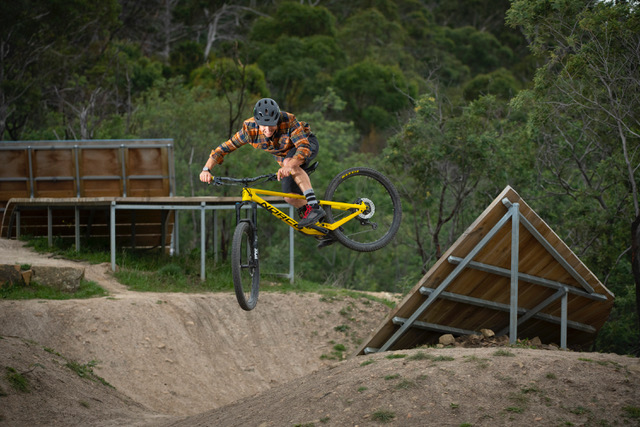
Author: Amanda Coombe

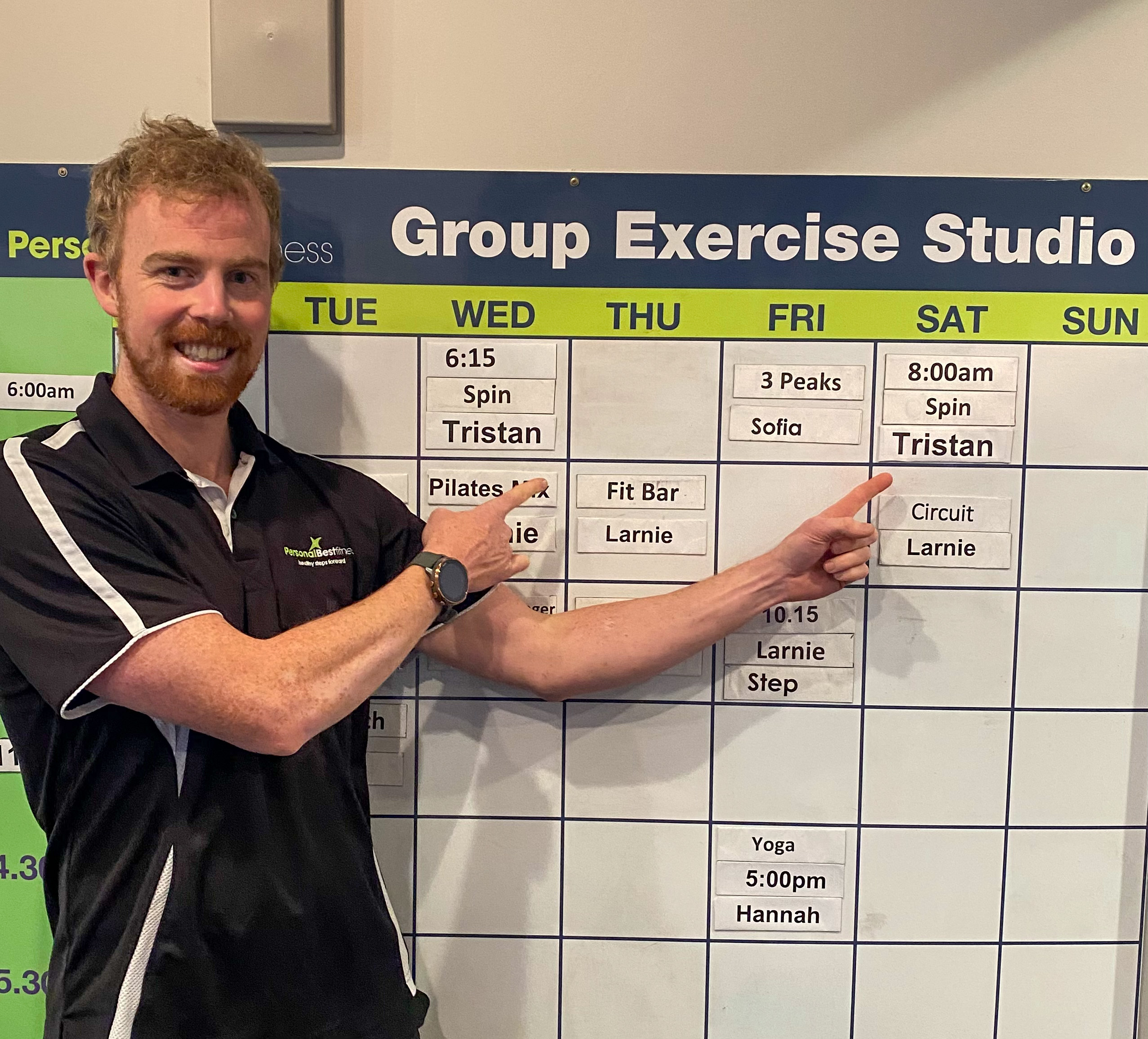
Why Spin?

- The cycling action offers a low impact form of huff n puff exercise. Spin classes are perfect if you’re recovering from an injury, starring down the barrel of knee surgery or just feel as if you need to take things a little more gently on your joints. Regardless of your fitness goals, you will still achieve a great workout. A well-designed class by an experienced instructor will allow you to go at your own pace. Afterall, fitness and physical activity is about improving the way you look, feel and function.
- Whether you’re looking to increase your huff n puff fitness, lose weight or increase leg and core strength, spin classes can offer it all in a single workout. The action of pedalling with resistance will help your body deal with any instability as a result of weaker muscles. Increasing your heart rate will help you burn calories and increase your metabolic rate. You can burn up to 600 calories in a spin class. That’s the equivalent of 6 glasses of wine.
- Increasing heart rate for prolonged periods like you will experience in a spin class will help to increase your bodies tolerance to other physical activities such as weight training, bush walking or hanging out the washing.
- Beyond the physical benefits you gain from a spin class, you will not find a single person arguing about the benefits exercise can have on mental health. Increasing your heart rate and moving your body is scientifically proven to relieve stress and anxiety. This partly occurs as a result of the body producing endorphins, sometimes known as the “feel good” hormone. Spin classes are a great way to do this, along with the added social benefits of being in a room with like-minded people and the affect it can have on your mental well-being.
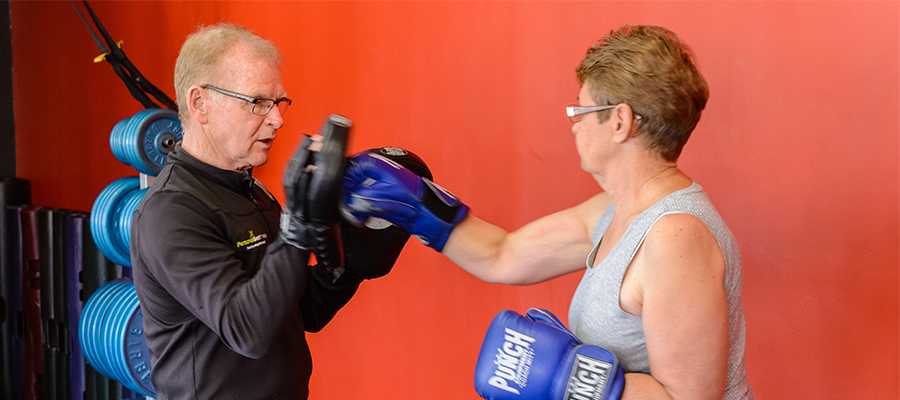
How much is too much?
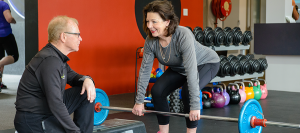 Unfortunately, a lot of these training methods aren’t true ‘HIIT’ sessions. HIIT stands for High Intensity Interval Training. It is designed to get your heart rate up or above 90% of its max, followed by an equal or longer period of time in your recovery zone, the ‘interval’ aspect of HIIT. It can help with fat loss, reduce your heart rate and blood pressure and results in an increased metabolic rate. The often misconception is that going harder means going for longer periods and resting for shorter periods. I’d definitely agree that these types of sessions are tough, but are they productive? A better description of the types of workouts listed above would be High Intensity Steady State Training, or fatigue sessions! I.e. you’re likely getting your heart rate into a moderate zone (not as high as a true HIIT workout), while not allowing yourself sufficient recovery.
It can take up to 48hrs for our body to recover after a high intensity training session. We create a high level of acidosis, resulting in the breakdown of muscle cells and the decrease in immune function. So by completing multiple of these sessions within a week, you are not only creating muscle breakdown, but you are releasing higher levels of cortisol and adrenaline into the body.
The thing is, our body doesn’t differentiate between physical and mental stress. So what are the repercussions of this constant cycle of our stressful, sedentary working life, interspersed with many bouts of high intensity training? Just like any form of stress, exercise releases cortisol and adrenaline into the body. In the right doses our body is able to adapt to this release and create positive changes, however if we’re not giving our body adequate time to recover (i.e. completing HIIT sessions often), this becomes detrimental to the system.
Being super fit and punishing yourself at the gym doesn’t equate to longevity. In fact it can do the opposite. Over training, under recovering, repetitive movement, too much muscle mass, and chronic cardio, are all examples of how movement can hurt you. There is no denying that people who chose to practice one sport are highly competitive in their chosen sport, however they’re rarely able to adequately replicate this ‘fitness’ across other sports. They’re often missing one key component; variability.
When it comes to longevity, the key component in training is variability. This means being strong and resilient for whatever comes your way. It means you can go fast, or slow, lift heavy, or light, move and adapt to awkward and challenge angles, etc. Variability means your tissue has the strength, tension and elasticity to respond to different speeds, loads, positions and vectors.
Our heart rate is a great responder to variability. It is important to have the ability to get your heart rate high (above 90% of heart rate max), for SHORT periods of time and it is just, if not more, important to have the ability to get your heart rate back down quickly and keep it there for sustained periods of time. We have looked at one form of heart rate variability training (HIIT), however we will have to save the full discussion for another time. For the time being, I want you to have a think about whether all of your training sessions are ‘smash fests’ in the gym or whether you are incorporating variability into your training and in fact aiming for wellness and longevity.
Signs you need to switch up your exercise and focus on wellness and longevity are:
Unfortunately, a lot of these training methods aren’t true ‘HIIT’ sessions. HIIT stands for High Intensity Interval Training. It is designed to get your heart rate up or above 90% of its max, followed by an equal or longer period of time in your recovery zone, the ‘interval’ aspect of HIIT. It can help with fat loss, reduce your heart rate and blood pressure and results in an increased metabolic rate. The often misconception is that going harder means going for longer periods and resting for shorter periods. I’d definitely agree that these types of sessions are tough, but are they productive? A better description of the types of workouts listed above would be High Intensity Steady State Training, or fatigue sessions! I.e. you’re likely getting your heart rate into a moderate zone (not as high as a true HIIT workout), while not allowing yourself sufficient recovery.
It can take up to 48hrs for our body to recover after a high intensity training session. We create a high level of acidosis, resulting in the breakdown of muscle cells and the decrease in immune function. So by completing multiple of these sessions within a week, you are not only creating muscle breakdown, but you are releasing higher levels of cortisol and adrenaline into the body.
The thing is, our body doesn’t differentiate between physical and mental stress. So what are the repercussions of this constant cycle of our stressful, sedentary working life, interspersed with many bouts of high intensity training? Just like any form of stress, exercise releases cortisol and adrenaline into the body. In the right doses our body is able to adapt to this release and create positive changes, however if we’re not giving our body adequate time to recover (i.e. completing HIIT sessions often), this becomes detrimental to the system.
Being super fit and punishing yourself at the gym doesn’t equate to longevity. In fact it can do the opposite. Over training, under recovering, repetitive movement, too much muscle mass, and chronic cardio, are all examples of how movement can hurt you. There is no denying that people who chose to practice one sport are highly competitive in their chosen sport, however they’re rarely able to adequately replicate this ‘fitness’ across other sports. They’re often missing one key component; variability.
When it comes to longevity, the key component in training is variability. This means being strong and resilient for whatever comes your way. It means you can go fast, or slow, lift heavy, or light, move and adapt to awkward and challenge angles, etc. Variability means your tissue has the strength, tension and elasticity to respond to different speeds, loads, positions and vectors.
Our heart rate is a great responder to variability. It is important to have the ability to get your heart rate high (above 90% of heart rate max), for SHORT periods of time and it is just, if not more, important to have the ability to get your heart rate back down quickly and keep it there for sustained periods of time. We have looked at one form of heart rate variability training (HIIT), however we will have to save the full discussion for another time. For the time being, I want you to have a think about whether all of your training sessions are ‘smash fests’ in the gym or whether you are incorporating variability into your training and in fact aiming for wellness and longevity.
Signs you need to switch up your exercise and focus on wellness and longevity are:
- Chronic stiffness and pain
- Lack of mobility and strength in varied positions
- Lack of heart rate variability – HR stays high, won’t go up, or takes longer to recover!
- Unable to get down to the ground and up again with ease
- Coordination and balance challenges
- Are you struggling with complex movement sequences?
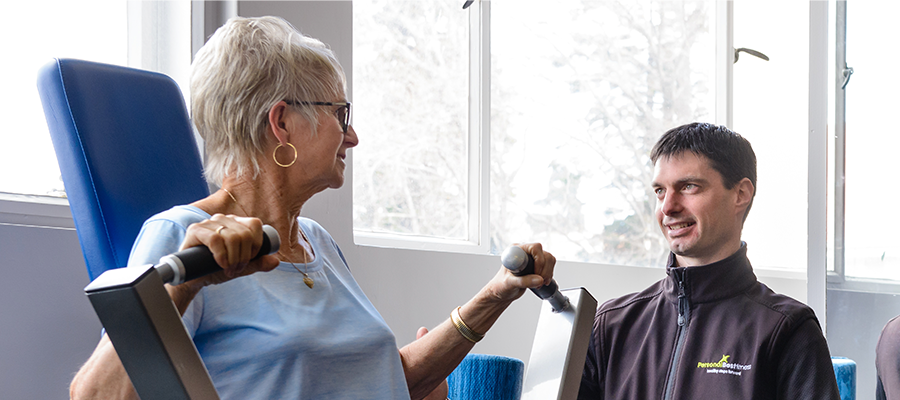
What does ‘Getting Fit’, actually mean?
There are 3 or 4 aspects of “Being Fit” that we may focus on with you at Personal Best:
- Improving your cardiovascular/aerobic fitness/ huff and puff.
- Help you increase your range of motion or flexibility.
- Improve your strength.
When getting started at Personal Best your personal trainer will direct you to the appropriate zone for you, taking into consideration the following:
- Your health
- If you have done vigorous exercise recently
- Any aches and pains that you may have
- And what goals you have
- If it is hypertrophy that you are after then 4 reps at 90% of your maximum load to 10 reps at 75% of your maximum load is required. Hypertrophy is a term for the growth and increase of the size of muscle cells.
- If muscular endurance is what you are after approximately 15 to 20 reps at 70% is required. Muscular endurance is the ability of a muscle or group of muscles to sustain repeated contractions against a resistance for an extended period of time. Some of the activities that require muscular endurance are, sustained walking or running, cycling, swimming, circuit training, aerobics and of course resistance training.
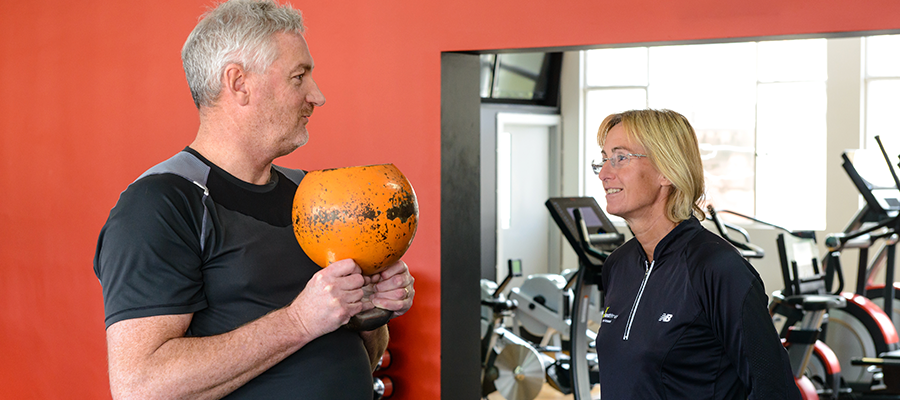
The Personal Best Story
 ‘I became frustrated with dealing with large groups of children for small amounts of time and prescribing first workout programs and never seeing the client again.
Moving into the field of personal training successfully addressed this for me’.
Until December 2005 Personal Best Fitness was a personal training consultancy working out of another health club. The initial client base was derived from writing to the parents of the children that Amanda taught and word of mouth.
It then became a dream to provide the clients of Personal Best Fitness with a facility that had a warm and friendly atmosphere and that inspires its members and clients.
After a year of planning this health and fitness club was a unique concept in Tasmania. Our premises were once the science labs for Hobart High School and when we started our renovations the periodical table was still on the wall!
As a result of business growth, in early 2006 Personal Best Fitness opened, as you know it today, offering memberships as well as personal training and then in 2007 group exercise was added.
Our aim to bring our members and clients, the highest level of professionalism, expertise and knowledge in helping you to look, feel and function better.
At Personal Best we achieve this by building and maintaining relationships, with our customers that is why we are not ‘just a gym’. Our belief is that every client is different and has a right to a membership and exercise program that suits their needs, goals and lifestyle.
We provide you with life changing experiences, by regular structured staff education and training programs, with the aim that you feel valued by ALL our team.
During our 22 years in the fitness industry we have expanded into the Corporate Health and Wellbeing space and conducted a number of programs for the likes of Norske Skog, Nystar, Hydro Tasmania, Tasmanian Audit Office, Glenview, Education Department and the MS Society.
We are now proud to say that we are the most awarded fitness business in Tasmania and are the only gym in Tasmania to be Quality Accredited with Fitness Australia.
‘I became frustrated with dealing with large groups of children for small amounts of time and prescribing first workout programs and never seeing the client again.
Moving into the field of personal training successfully addressed this for me’.
Until December 2005 Personal Best Fitness was a personal training consultancy working out of another health club. The initial client base was derived from writing to the parents of the children that Amanda taught and word of mouth.
It then became a dream to provide the clients of Personal Best Fitness with a facility that had a warm and friendly atmosphere and that inspires its members and clients.
After a year of planning this health and fitness club was a unique concept in Tasmania. Our premises were once the science labs for Hobart High School and when we started our renovations the periodical table was still on the wall!
As a result of business growth, in early 2006 Personal Best Fitness opened, as you know it today, offering memberships as well as personal training and then in 2007 group exercise was added.
Our aim to bring our members and clients, the highest level of professionalism, expertise and knowledge in helping you to look, feel and function better.
At Personal Best we achieve this by building and maintaining relationships, with our customers that is why we are not ‘just a gym’. Our belief is that every client is different and has a right to a membership and exercise program that suits their needs, goals and lifestyle.
We provide you with life changing experiences, by regular structured staff education and training programs, with the aim that you feel valued by ALL our team.
During our 22 years in the fitness industry we have expanded into the Corporate Health and Wellbeing space and conducted a number of programs for the likes of Norske Skog, Nystar, Hydro Tasmania, Tasmanian Audit Office, Glenview, Education Department and the MS Society.
We are now proud to say that we are the most awarded fitness business in Tasmania and are the only gym in Tasmania to be Quality Accredited with Fitness Australia.
Thank you for being a part of our journey as we continue to help you look, feel and function better.
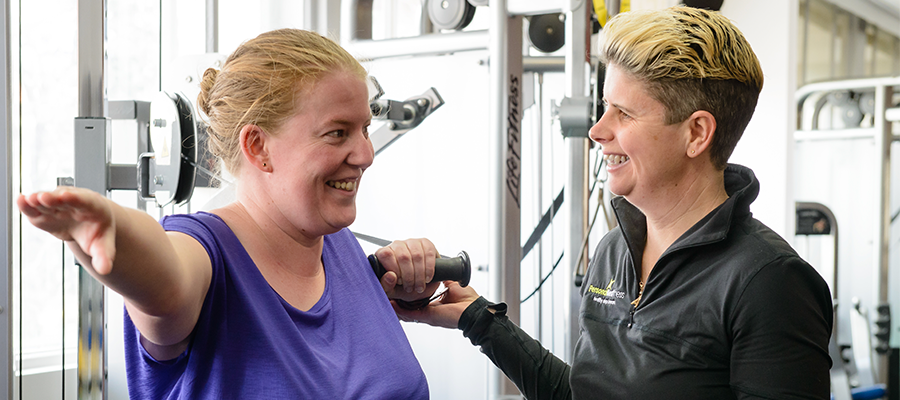
Create More Movement Options
In my previous article , I wrote about the importance of exercise and exercise variability on mental health. I’m going to expand on this topic in regards to what is happening in the brain and the tissue and how that can be incorporated into exercise.
Regular physical activity plays a crucial role in health maintenance and disease prevention. However there is an increasing occurrence of excessive exercise among certain population groups, which have adverse effects on both physical and mental health. I want to set a framework to help you find balance and question your perspective about what exercise is for you and how you approach it.
I believe, all too often in our society we approach exercise as something we have to do often because we want to lose weight or use it as a mechanism to keep on top of our mental health. Both of these reasons are perfectly valid and effective forms to achieve such outcomes, however I want to prompt you to think about why it is you exercise and whether what you are doing is enjoyable.
In my previous article I wrote about the Default Mode Network (DNM) and how it is active when a person is focused internally, e.g. Ruminating, and is less active when focused on attention-demanding tasks. Previously I wrote that a hyperactive DMN is associated with mental health issues such as obsessive behaviour, anxiety and depression. I explained how a hyperactive DMN results in less neural patterning, meaning we continue to strengthen the same neural networks, therefore have the same thought processes, increasing our anxious thoughts.
When relating this to exercise, one of my favourite sayings is ‘create more movement options’. What does this mean? Simple.
Move more, move different and move more often .
It doesn’t matter HOW you move, as long as you are spending time doing different exercises, reaching in different planes of motion and getting your heart rate UP and DOWN in different increments regularly. Any exercise is good exercise, however if relating this to our brain activity, we want to be able to keep exercise enjoyable and variable in order to thrive rather than survive in everyday life.
Having spent a lot of time working with cyclists, I always think they’re the quintessential example of what we’re talking about here. Cyclists are by nature pretty obsessive people! They often have what we term ‘type-A’ personalities, i.e. they’re ambitious, rigidly organised and status conscious. They’re your classic ‘high achievers’. Cyclists spend a lot of time in the same position, often a lot of time in a similar heart rate zone and, are quite often in high achieving occupations.
Which comes first, the obsessive behaviour or the rigid exercise routine? It’s a chicken or egg situation. Someone with a type-A personality is likely to be more attracted to endurance sports, e.g. cycling, running etc, because being driven in this sport is what allows them to excel at it, however too much of this type of activity, ie. low neural patterning, will also result in a hyperactive DMN.
There is nothing ‘wrong’ with cycling itself (I spend a lot of time riding bikes myself), however for people who spend a lot of time doing one thing, even sitting at a desk, should consider creating more movement patterns.
This is where at Personal Best Fitness we see the benefit of implementing tools such as ViPRs in your exercise routine. ViPRs bridge the gap between movement and strength. By shifting weight, rather than lifting it against gravity, engaging your muscles with variable stimuli. They allow us to adapt to new movement patterns by stretching and loading as you move, resulting in a lean, long and strong system.
“Any exercise is good exercise, as long as what you are doing resembles what you ‘think’ you are doing.”
Written by Senior personal trainer, Sofia Tsamassiros
Reference list:
- Exercise Addiction: a literature review. 2008. https://www.ncbi.nlm.nih.gov/pubmed/18956613
- Functional connectivity in the resting brain: A network analysis of the default mode hypothesis. 2002. https://www.ncbi.nlm.nih.gov/pmc/articles/PMC140943/
- The Role of Default Network Deactivation in Cognition and Disease. 2012.
- https://www.ncbi.nlm.nih.gov/pmc/articles/PMC3501603/
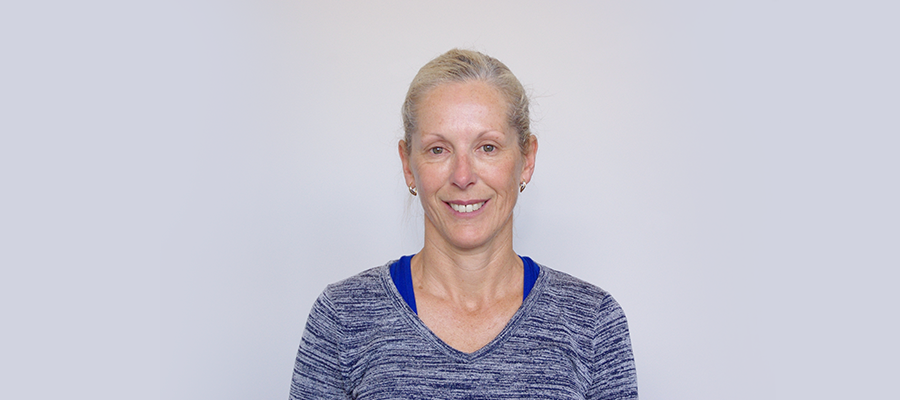
Meet Larnie
Some years later she updated her skills to include spin and kick boxing. However her true love is teaching step classes. Larnie has been in Hobart now for 10+ years and at Personal Best for over 6 years. After 3 decades in the fitness industry, Larnie still has the same passion and love for teaching classes.
“ I just love the enthusiasm of those who come to my classes and also the social contact that brightens all of our days”.
Lifting weights both pin loaded and free weights is Larnie’s favourite form of exercise for herself. Away from fitness Larnie enjoys all things Thai and to relax she enjoys horse riding, a good movie and a Kahlua on ice. Larnie favourite quote is;
“time waits for no man and neither do I”.
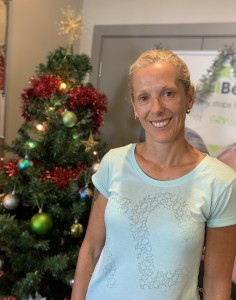

12 Days of Christmas Tips
Here are tips to help you ‘maintain your gains’ during the month of December.
1. Stay Active
Staying Active over the silly season is a great way to stay on top of your goals. Your body doesn’t know what time of year it is, so keep exercising, you will be happier and healthier for it.2. Keep Hydrated
In between the Christmas cheer make a deliberate attempt to drink water.Not only will this help to keep you hydrated but increase your ability to get the most out of your muscles during the next workout you do.3. Enjoy
Allow yourself to enjoy your Christmas lunch and or dinner. This shouldn’t be a stressful time for you if you are focused on weight loss. Enjoy your food on Christmas Day, just don’t continue on the ‘merriness’ of it for days afterwards.4. To say ‘I don’t have time,’ is like saying, ‘I don’t want to.”– Lao Tzu.
Think for a moment about the things you domake time for… your health and quality of life can be scheduled in somewhere.5. Short Term Goals
Set yourself some. Make them SMART – Specific, Measurable, Achievable, Relevant and Timely.6. Plan Ahead
If you are travelling during the festive season, eat something before you go to avoid stopping for fast food. Take a bottle of water in the car with you so you can hydrate as you go.7. Set Realistic Plans
Make time for yourself. Cramping too much in can stress and drain you.8. Suggest Healthy alternatives as gifts
If someone asks you what they can buy you for Christmas, why not suggest a walk along the beach instead, a swim at the pool.9. This is OK
If you receive that box of chocolates, re-gift them…this is ok…or share them with your visitors.10. Be Mindful
Eating for the sake of eating is something we do often. Especially in times of celebration. Be mindful of the amount of food you are eating and when you are eating it. Ask yourself . . . am I hungry?11. Book a Personal training session
Whether it be for a program up date to start the New Year or to ensure you do some exercise in the break. It is a great way to stay strong.12. “The best thing about time is that it comes one day at a time’ – Abraham Lincoln
We can achieve the most amazing goals if we take things a step at a time. Fran Sullivan Master Personal Trainer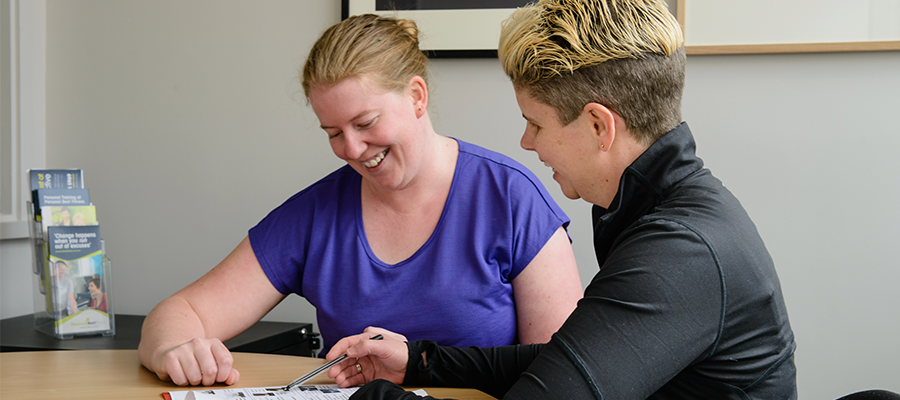
Taking the ‘fad’ out of weight loss!
 If you google fad diets you will likely come up with a never-ending list:
2019 Best and Worst Fad Diets for Weight Loss and underneath that is a list of the 5 most common forms of fad diets.
Many of us want to lose weight and we want to have lost it yesterday!
Rather than going down the fad diet pathway, why not look at working on sustainable, healthy life long changes.
If you google fad diets you will likely come up with a never-ending list:
2019 Best and Worst Fad Diets for Weight Loss and underneath that is a list of the 5 most common forms of fad diets.
Many of us want to lose weight and we want to have lost it yesterday!
Rather than going down the fad diet pathway, why not look at working on sustainable, healthy life long changes.
Research suggests that fad diets fall into five general groups:
- Food – specific diets, which encourage eating large amounts of a single food, such as the cabbage soup diet.
- Low-Carb diets, such as the Atkins diet, which first became popular in the 1970’s.
- High fibre, low – calorie diets, which often prescribe double the amount of recommended dietary fibre.
- Liquid diets, such as SlimFast meal replacements drinks.
Consider the following:
- Start by removing the word ‘diet’ from your vocabulary. When the time is right for you avoid saying ‘you are on a diet’, but rather you are improving your health by making better choices.
- Slow down with the time frame you give yourself to lose the weight you have gained. Weight creeps on gradually, you may not always notice it straight away, but it’s that one morning when you wake up and think how did that get there. Weight is generally gained over a long period of time, so make a realistic goal with your personal trainer about how you can shred it safely and keep it off. Small goals often achieve big results.
- Understand how your body reacts to the food you eat. Ask a personal trainer to explain this to you. Understanding the ‘why’ may help when you are about to make that not so good choice.
- Forget about what other people are doing to lose weight. Concentrate on your own lifestyle, your own situation and set realistic goals accordingly.
- Have less time sitting in front of the TV and introduce a sustainable exercise regime. Talk with a personal trainer about a weekly plan. About how many times you should exercise, what program you should do on what day and how these best fit with your personal training session.
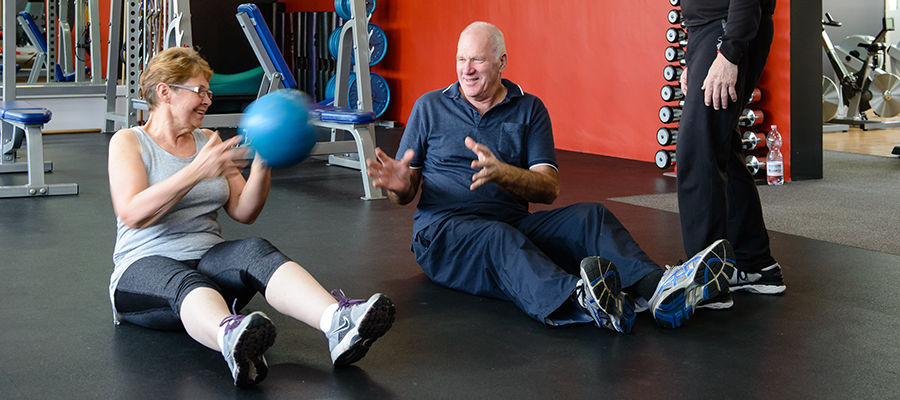
Half full or half empty?
 We’ve all read that exercise is great for mental health and there is exponential research to support that claim. Exercise releases ‘feelgood’ hormones such as endorphins and serotonin, boosting your mood and reducing stress and anxiety. What if I were to suggest that you can approach exercise in a more effective manner in order to reduce these symptoms?
Having recently reading ‘How to Change Your Mind’, a book about psychedelics and their potential as a treatment for mental disorders and higher thinking, it intrigued me from both a personal and professional aspect. I definitely recommend the read!
One such discussion was that on low entropy state. Essentially explaining how excess order (eg. Rigid thinking and obsessive behaviour) results in a hyperactive ‘default mode’. This ultimately traps us in a repetitive and destructive state of rumination. – Think classic signs of Obessive Complusive Disorder, anxiety and depression and to a lesser extent, obsessive eating or exercise habits. If on the other hand, we are able to access a high entropic state, the brain becomes less specialised and more globally interconnected.
Learning entails the establishment of new neural networks (neuroplasticity) – If we are able to boost the diversity in our mental life (ie. high entropic state), the more possibilities the mind has and the more creative our solutions will become.
Where am I going with this, and what does it have to do with exercise?
Most of us understand that we need to change our exercise program routinely in order to see improvement; whether it be increasing the resistance, trying a new exercise or trying a completely different sport. When we first try something new, it’s hard and we’re rarely a natural at it. It is this same concept that we can employ with our workout routine. We want to ‘surprise’ our body as often as possible, not only to improve our physical function, but also our mental function.
If you always exercise on the same day, at the same time and do the same routine on those days, try changing it up. Come to Personal Best Fitness at a different time or try a different workout routine or class. The members in my small group personal training will know I love using ViPRs and will often introduce a few group activities or exercises in which they’re made to focus on what they’re doing and creating ‘game’ based training. This can be as simple as throwing a tennis ball or other games you used to play as a kid such as Simon says. You’d be surprised about how quickly this kind of exercise can get your heart rate up, all the while putting a big smile on your face. And better yet, you’re improving your brain’s ability to wire itself and improving your mental health.
Sofia Tsamassiros
Senior Personal Trainer
We’ve all read that exercise is great for mental health and there is exponential research to support that claim. Exercise releases ‘feelgood’ hormones such as endorphins and serotonin, boosting your mood and reducing stress and anxiety. What if I were to suggest that you can approach exercise in a more effective manner in order to reduce these symptoms?
Having recently reading ‘How to Change Your Mind’, a book about psychedelics and their potential as a treatment for mental disorders and higher thinking, it intrigued me from both a personal and professional aspect. I definitely recommend the read!
One such discussion was that on low entropy state. Essentially explaining how excess order (eg. Rigid thinking and obsessive behaviour) results in a hyperactive ‘default mode’. This ultimately traps us in a repetitive and destructive state of rumination. – Think classic signs of Obessive Complusive Disorder, anxiety and depression and to a lesser extent, obsessive eating or exercise habits. If on the other hand, we are able to access a high entropic state, the brain becomes less specialised and more globally interconnected.
Learning entails the establishment of new neural networks (neuroplasticity) – If we are able to boost the diversity in our mental life (ie. high entropic state), the more possibilities the mind has and the more creative our solutions will become.
Where am I going with this, and what does it have to do with exercise?
Most of us understand that we need to change our exercise program routinely in order to see improvement; whether it be increasing the resistance, trying a new exercise or trying a completely different sport. When we first try something new, it’s hard and we’re rarely a natural at it. It is this same concept that we can employ with our workout routine. We want to ‘surprise’ our body as often as possible, not only to improve our physical function, but also our mental function.
If you always exercise on the same day, at the same time and do the same routine on those days, try changing it up. Come to Personal Best Fitness at a different time or try a different workout routine or class. The members in my small group personal training will know I love using ViPRs and will often introduce a few group activities or exercises in which they’re made to focus on what they’re doing and creating ‘game’ based training. This can be as simple as throwing a tennis ball or other games you used to play as a kid such as Simon says. You’d be surprised about how quickly this kind of exercise can get your heart rate up, all the while putting a big smile on your face. And better yet, you’re improving your brain’s ability to wire itself and improving your mental health.
Sofia Tsamassiros
Senior Personal Trainer

 Timetable
Timetable 6234 5969
6234 5969